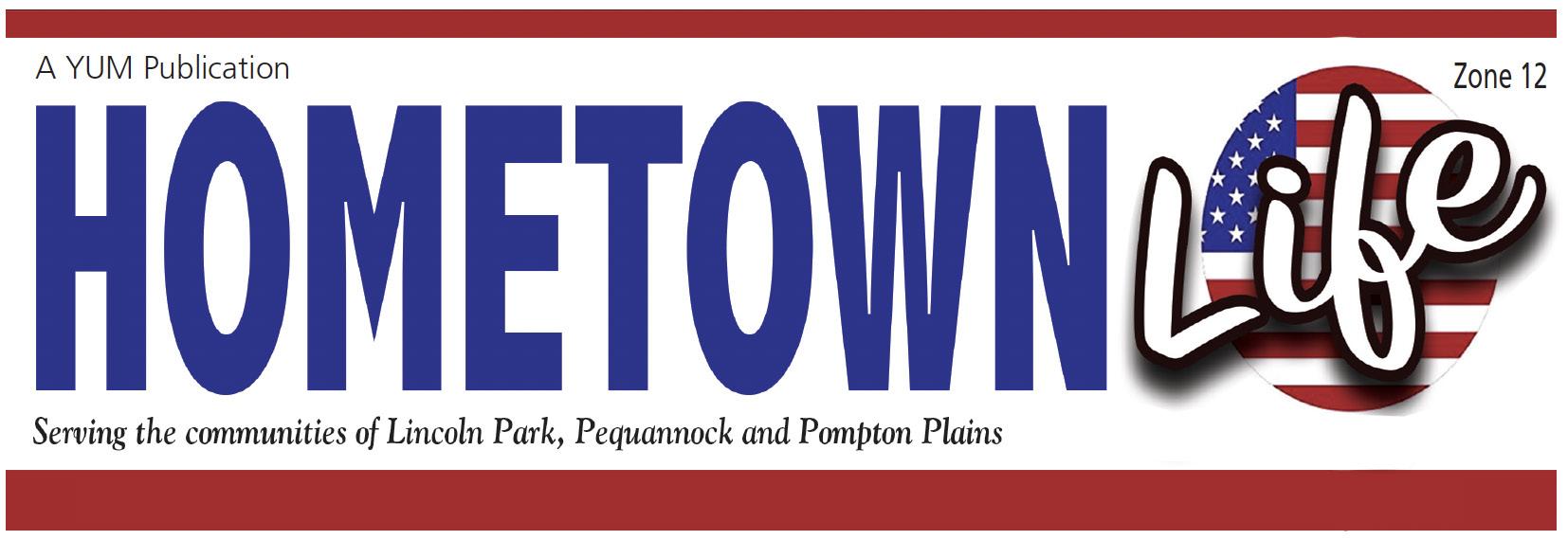

FAQ About Hurricanes
Balmy temperatures and warm ocean waters make summer a very popular time of year. But the conditions that can make a day at the beach inviting also tend to fuel strong storms that peak during this time of year.
Hurricanes are not exclusive to summer, but their peak activity and formation tend to happen during late summer and early fall. This is due largely to rising ocean temperatures, which must reach 79.4 F (26.5 C) to a depth of at least 160 feet for a hurricane to develop. These temperatures are commonly reached during the summer and early fall in subtropical regions. Warm, moist air also is a hallmark of hurricane formation, which is a notable condition during the summer.
Although hurricanes occur each year, there is much about these powerful storms that the general public may not know.
Where did the word “hurricane” originate?
The word hurricane comes from the Taino Native American word “hurucane,” which means “evil spirit of the wind.” This name helped make sense of the storms, which feature extremely strong winds.
Where do hurricanes begin?
Hurricanes begin as warm air over tropical areas of the ocean, building strength by drawing moisture from warm ocean waters.
What is the difference between a typhoon, hurricane or cyclone?
These names refer to the same type of storm, but vary depending on the region of the world in which the storm occurs. “Hurricane” refers to storms that form over the Atlantic Ocean.

When is hurricane season?
According to the National Oceanic and Atmospheric Administration, the Atlantic hurricane season begins June 1 and extends to November 30. In the East Pacific, the season runs from May 15 to November 30.
How are hurricanes classified?
Hurricanes are classified by their strength using the Saffir-Simpson Scale. Major (intense) hurricanes fall into categories 3, 4 and 5. A category 3 hurricane begins at wind speeds of 130 miles per hour.
Which state gets the most hurricanes?
Operation Blessing says Florida has had the most hurricanes since record keeping began. The majority of Florida stretches into warm water, with the Gulf of Mexico on its western side and the Atlantic Ocean on its eastern.
cont. on page 4














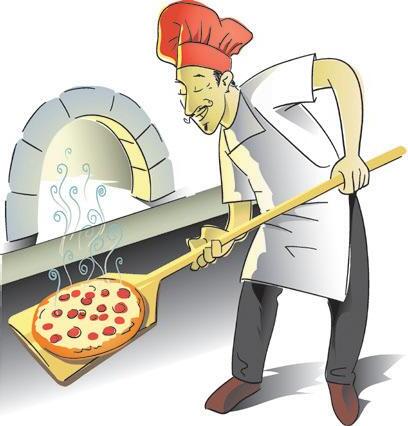



For the Joy of Birding
If you enjoy feeding the birds, you are not alone! It is estimated that more than 50 million people feed backyard birds in the United States, according to the U.S. Fish & Wildlife Service. It is a popular outdoor hobby that has brought many people closer to nature (andnature closer to people).
Helping people discover the joy of birding in their own backyard is a goal of The Backyard Birding Store, a specialty Nature and Gift shop, that opened earlier this year in Pompton Plains, New Jersey. Customers experience a sanctuary-like setting upon entering the store, with gentle bird song, plenty of natural light, and an array of products that arepleasing to the eye and suitable for any backyard, garden,

patio or porch.
“In opening the store, we wanted to create an environment where people felt part of acommunity…a place to stop and talk about their passion for nature…and a place where they can ask questions and share their own experienc-

GRAND OPENING!

679A Rt. 23 S Pompton Plains (across from the Pompton Queen Diner) thebackyardbirdingstore.com
es,” says owners Andrew and Joanne Marino. “Many customers who visit our store spend as much time talking with us about their birding as they do browsing our products,” they noted.
The store carries a wide range of products including high quality seed, feeders, shepherd hooks, bird baths

Experience the Joy of Birding in your own Backyard
We're a locally owned Nature Shop created especially for the Backyard Birding Hobbyist
We provide high quality... Seed

and nest boxes. They also carry a variety of nature-related gifts such as wood carvings, wind chimes, books, hats, walking sticks and notecards – many items are hand-crafted and made in the U.S.



Andrew and Joanne weren’t always shop owners. This is the product of a years-long hobby that
“We want to provide our customers with high quality items that they won’t easily find elsewhere,” say the owners. “That’s what is special about a small, locally owned business like ours: always something different, and some of it locally made.”
cont. on page 5

Owners Andrew and Joanne Marino at the Grand Opening of The Backyard Birding Store earlier this year.




PALS - Public Affairs Lecture Series 2025
Tackle the world’s problems at our 33 rd year of PALS, the Public Affairs Lecture Series, sponsored by Fairleigh Dickinson University’s School of Public and Global Affairs. Speakers include distinguished professors from prominent universities, and think tanks, dignitaries, and other leaders in their fields. Lectures are delivered Monday afternoons from 2:00—3:30 (NEW TIME) at the Morris Museum’s Bickford Theatre, in Morristown, NJ. Season tickets $120 per person.
September 8
President Trump’s Second Term Foreign Policy
Dr. Jerry Pubantz, Professor Emeritus of Political Science, University of North Carolina
September 15
Managing Risk in the Age of the Agentic Economy; Blockchain, crypto, AI, Generative AI (GenAI) and much more...”
Dr. Merav Ozair, Leading Global Emerging Technologies Expert
September 29
An Uncertain European Future: War, Economic Competitiveness, and the Future of Alliances
Heather Conley, Former President of the German Marshall Fund
October 6
Powershift, the Gulf Countries, the United States, and the New Middle Eastern Order
Dr. Steven Cook, Senior Fellow, Council on Foreign Relations
October 13
What Does Criminal Justice Reform Now Mean for the US Supreme Court and America in the Fall of 2025?
Prof. Douglas Berman: Moritz School of Law, Ohio State University
October 20
A World Without Rising Powers: How Population Decline and Economic Stagnation are Ending an Era of Global Upheaval—and Bringing New Threats
Dr. Michael Beckley, Director of the Asia Program at the Foreign Policy Research Institute and Associate Professor of Political Science, Tufts University
October 27
Can the Public Rely on Polling to Accurately Predict the Outcomes of the U.S. Elections?
Dr. Daniel Cassino, Prof. and Director of the Fairleigh Dickinson University Poll
November 3
Death with Dignity: The Status of Medically-Assisted Dying in NJ and other States
Hon. Paul Armstrong, Retired Judge of the N.J. Superior Court, and Rutgers University Professor
November 10
Issues and Challenges Facing NJ’s Next Governor
Dr. Benjamin Dworkin, Director, Rowan Institute for Public Policy and Citizenship
November 17
Advances in Cancer Research: Innovative Cancer Immunotherapies
Dr. Andrea Schietinger, Professor, Memorial Sloan Kettering Cancer Center
For additional information: FDU.edu/pals or email us at: palsboard2025@gmail.com



FAQ...
cont. from front page
Do hurricanes affect Canada?









Hurricanes occasionally affect Canada, namely on the Atlantic Ocean side of the country, says Get Prepared, an emergency preparedness site from the Government of Canada. On rare occasions, remnants of tropical cyclones in the Pacific can affect British Columbia.
What is the typical rainfall associated with a hurricane?
A typical hurricane can dump six inches to a foot of rain across a region.
When did hurricanes begin being named?
In 1953, the U.S. Weather Bureau started the process of assigning women’s names to tropical storms. In 1979, men’s names were added. The names used are in alphabetical order, but exclude the letters Q, U, X, Y, and Z. Six lists of names exist and are rotated every six years. A name is retired from a list when the storm causes so many deaths or so much destruction that it would be insensitive to use the name again. The World Meteorological Organization oversees retiring hurricane names and choosing new ones.
What was the most active hurricane season to date?
The National Hurricane Center identified 28 storms in 2005. There were so many storms that all of the traditional storm names had been used, and the last six storms were given Greek letters. This is the storm season that spawned Hurricane Katrina, which decimated New Orleans.
How can I prepare for a hurricane?
Individuals should prepare emergency kits that contain first aid kits, extra prescription medication, nonperishable food, water, batteries and battery-powered radio, cash, diapers, baby formula, and important documents. A household emergency plan, which may include where to evacuate, if necessary, also is a good idea.
Hurricane season can be so devastating that it benefits anyone to learn as much as possible about these strong storms.

evolved into a business idea. “We’ve had the idea for a store like this in the back of our minds for a long time.” A former Corporate Vice President and a Substitute Teacher from Fairfield, the Marinos waited until the time was right, when their children were grown, to put the plan in motion, opening the doors in February 2025.
Roadwork Begins on Newark Pompton Turnpike in Pequannock July 28
ADA Ramp, Milling and Paving Work Planned Through Early October
Beginning on or about Monday, July 28, roadway improvements will begin on Newark Pompton Turnpike (County Route 660) between Route 23 and Jacksonville Road in Pequannock Township.
Work is scheduled to take place Monday through Friday, from 7 a.m. to 3:30 p.m., and is expected to continue through early October, weather permitting.
The project includes Americans with Disabilities Act (ADA) compliant curb ramp upgrades, catch basin repairs, milling, paving and other associated improvements, beginning with small closures for ADA and drainage work, followed by milling and paving operations.
Intermittent closures and traffic shifts should be expected throughout the project, as directed by local law enforcement. Access to businesses and residences will be maintained, and safe passage through the work area will be ensured at all times.
Motorists are advised to drive cautiously, follow posted detour signs, allow extra travel time, and consider alternate routes due to anticipated delays. The project is being managed by D.S. Meyer Enterprises, LLC, with striping and signage provided by Straight Edge Striping, LLC. Funding is provided through the New Jersey Department of Transportation Local Aid program.



“We’re very fortunate be here in Pequannock. The location brings in many wonderful people from the surrounding communities, and we are enjoying getting to know our customers.” In addition to running the store, Andrew and Joanne are involved in local activities and give talks on various related topics. “It’s all part of being part of the neighborhood and giving back. We appreciate the opportunity to be here in Pequannock and are happy to do our part to support the community.”
If you are a beginner bird-feeder, experienced birder, or just thinking about starting out, visiting The Backyard Birding Store should be high on your to-do list. Quality products, friendly advice and a place you’ll enjoy coming back to often, The Backyard Birding Store islocated at 679A Route 23 South, directly across from the Pompton Queen Diner. Visit them online at www.thebackyardbirdingstore.com as well as on Instagram and Facebook.


For more information or to report questions or concerns, please contact the Morris County Division of Engineering and Transportation at 973-285-6750.




and Bird Guides are among the many nature-related gifts available
The PerfecT Tux.




Late summer is an exciting time for sports fans. After months away from the gridiron, college football season kicks off at the end of August. Each college football season is unpredictable, as no one knows which game will mark the first big upset or who will ultimately be crowned as national champions in January. As college football fans prepare for another fun season, they can look to these notable early season games on the 2025 schedule.
• TCU at North Carolina, September 1, Kenan Memorial Stadium, Chapel Hill, North Carolina: Even though TCU and North Carolina may not begin the season ranked among the nation’s top 25 teams, all eyes will be on Chapel Hill come the evening of Labor Day. That’s because the game marks the college head coaching debut of six-time Super Bowl champion coach Bill Belichick. Belichick is recognized as one of the greatest professional football coaches of all time, and millions of fans are eager to see how the 73-year-old adapts to the college game.
• Alabama at Florida State, August 30, Doak Campbell Stadium, Tallahassee, Florida: After a memorable 2023 campaign in which late-season injuries led to their controversial exclusion from the College Football Playoff, Florida State endured a difficult 2024 season, finishing 2-10 overall and last in the ACC. This late August matchup provides a great opportunity for the Seminoles to put that disappointment firmly in the rearview mirror. But second-year Crimson Tide coach Kalen DeBoer, who had an up-and-down first year in Tuscaloosa after replacing legendary coach Nick Saban, will undoubtedly also see this matchup as a great chance to make a statement about 2025.


• Texas at Ohio State, August 30, Ohio Stadium, Columbus, Ohio: The reigning national champion Buckeyes kick off their 2025 campaign with a matchup against fellow 2024 playoff participant Texas. While the Buckeyes are reason enough to tune in, all eyes might be on Texas signal caller Arch Manning, who should finally take over for Steve Sarkisian after patiently waiting to be the fulltime starter for two seasons.
• Georgia at Tennessee, September 13, Neyland Stadium, Knoxville, Tennessee: Tennessee head coach Josh Heupel has made great strides since becoming the Vols’ head coach in 2021. But Heupel has never beaten Kirby Smart or Georgia since arriving in Knoxville, and this week three clash provides another chance to do so. Complicating matters for Heupel and the Vols is the sudden and surprising offseason departure of talented quarterback Nico Iamaleava, who transferred to UCLA after a financial dispute.
• Oregon at Penn State, September 27, Beaver Stadium, University Park, Pennsylvania: These two 2024 playoff teams will be looking to make an early season statement that they deserve to play into January once again. Oregon entered the 2024-25 playoff as the top overall seed but fell to eventual champion Ohio State 41-21 in the quarterfinals. Penn State advanced to the semifinals before losing a close one to Notre Dame. Each team is hoping this late September Big Ten matchup will boost their résumé and help them earn a return trip to the playoffs.
Excitement is the name of the game in college football. These early season matchups are just a handful of the many games on the 2025 college football schedule that figure to excite fans this fall.









Ghost Girls: The Tragic Legacy of Radium Dial Painters
By Henry M. Holden
The story of the Ghost Girls more widely known as the Radium Girls is a haunting chapter in industrial history. In the early 1920s, young women in Essex County, New Jersey, began showing up in the office of doctors and dentists with problems such as aching bones, ulcers of the gum, toothlessness, anemia, and painful angina. The most common condition was Jaw Rot, the slow, partial and painful decay of bone and tissue in the mouth.
What puzzled scientists and medical personnel was the fact that the conditions were not seen in young males and seen only and in young females, in Essex County.
Much evidence of radiation poisoning was dismissed as anything other than what it was. For example, when a radium plant received complaints from neighbors that the fumes produced made it difficult to breathe and were staining their laundry yellow. They were dismissed as opportunism by immigrants desperate for money.
After being told that the paint was harmless, the women in each facility ingested deadly amounts of radium after being instructed to “point” their brushes on their lips in order to give them a fine tip. The women were instructed to point their brushes because using rags or a water rinse caused them to use more time and material, as the paint was made from powdered radium, zinc sulfide, gum Arabic, and water.
The Ghost Girls had lasting effects on the labor laws in the United States and Europe following expensive and plentiful lawsuits following deaths and illness from the ingestion of radium.
Early fact discovered that the women involved had
worked at one time at the United States Radium Corporation, in Orange New Jersey.
For a while, the radium girls must have felt unbeatable. For one, unlike many other factory workers, dial-painters in the U.S. Radium Corporation (USRC) in Orange, New Jersey, made up to $40,000 per year, three times the average, and worked in much more serene and humane conditions. But the job had other inducements, too.
Not only were the women contributing to the war effort, but they were also inscribing their names and addresses on the backs of the watches they made, thereby receiving letters from soldiers in return. But their most significant contributions would be not to the war, but to science, medicine, and the rights of workers, and they would be made at a great personal cost.
When the women left their jobs and stepped out into the night, they glowed in the dark, earning the sobriquet nickname, the ghost girls, as a result. The glow was one of the side effects of unintentionally ingesting hazardous quantities of radium through dust at their workplace and the radioactive paint on their work brushes, which many of them licked to maintain a pointed end.
From 1917 to 1926, United States Radium Corporation (USRC), was engaged in the extraction and purification of radium from carnotite ore to produce luminous paints, which were marketed under the brand name “Undark.” The ore was mined from the Paradox Valley in Colorado and other “Undark mines” in Utah. As a defense contractor, USRC was a major supplier of radial luminescent watches to the military. Their plant in Orange, New Jersey, employed as many as 300 workers, mainly very

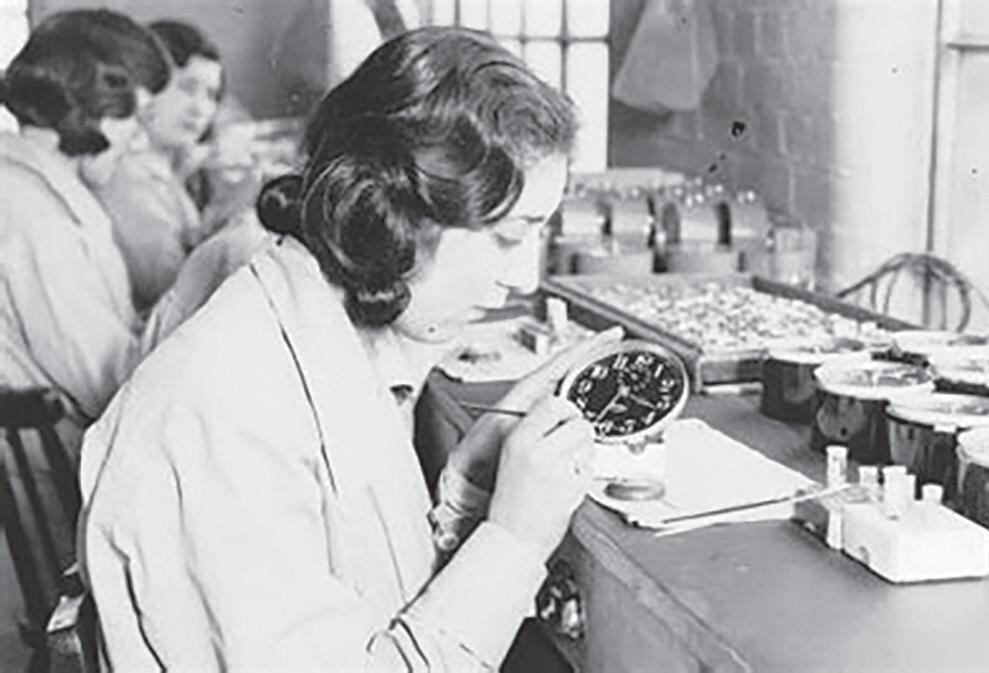
young girls and women, to paint radium-lit watch faces and instruments.
USRC hired approximately 70 women to perform various tasks including handling radium, while the owners and the scientists familiar with the effects of radium carefully avoided any exposure to it themselves. Chemists at the plant used the Radium Girls› saga to hold an important place in the history of the fields of health physics, women›s rights, and the labor rights movement. The right of individual workers to sue for damages from corporations due to labor abuse was established. Industrial standards for safety improved as a result, and in 1949, Congress passed a bill that ruled compensation for all workers suffering from occupational diseases.
An estimated 4,000 workers were hired by corpora-




tions in the U.S. and Canada to paint watch faces with radium. At USRC, each of the painters mixed their own paint in a small container they used. They each had camel hairbrushes to apply the glowing paint onto dials. The rate of pay was about a penny and a half per dial (equivalent to $0.368 in 2024), earning the girls $3.75 (equivalent to $92.04 in 2024) for painting 250 dials per shift.
The brushes would lose shape after a few strokes, so the USRC supervisors encouraged their workers to point the brushes with their lips (“lip, dip, paint”), or use their tongues to keep them sharp. Because the true nature of the radium had been kept from them, the radium cirls also painted their nails, teeth, and faces for fun with the deadly paint produced at the factory. By 1927, more than 50 female factory workers had died from radium poisoning caused by the paint used.
The lawsuit and resulting publicity was a factor in the establishment of occupational disease labor law. Radium dial painters were instructed in proper safety precautions and provided with protective gear; in particular, they no longer shaped paint brushes by lip and avoided ingesting or breathing the paint. Radium paint was still used in dials as late as the 1970s. The last factory manufacturing radium paint shut down in 1978.
Other side effects, caused by radium poisoning that irretrievably settled into their bones, were much more serious. From damaging tissue and constantly reproducing bone marrow to causing different types of cancer, the crippling and often fatal injuries resulting from working with radium were wide range and terrifying.
Two sisters, Bessie (King) and her older sister Josephine (Quinn) work at American Radium in Orange, New Jersey, in 1928; their eldest sister Mary was also employed at the same factory before her death, allegedly from syphilis, three years earlier.
Yet Bessie’s progress at work was slower, as she refused to use her lips to soften and refined the tip of her camel-hair paint brush before each application, a technique known as “lip-pointing” that transferred over from porcelain painting. Bessie’s position also makes her work sloppier, thus earning her less money. But, unknown to her at the time, it would spare her life.
Josephine, however, began to exhibit side effects typical of radium poisoning; her teeth loosen and fell out, she coughs up blood and pieces of her “honeycombed” or “radium jaw”. Concerned about her ailing sister, Bessie asks the factory’s boss to cont. on page 10











Ghost Girls... cont. from page 9
recommend a doctor who could see Josephine. Instead of aiding his workers, the boss responds unfavorably.
Insinuating that Bessie and Josephine are acting like hysterical women, their boss tries to dismiss their symptoms as a byproduct of their sexuality or sexual repression. But, a doctor is finally sent their way, only to question Josephine about the adequacy of her personal hygiene regiment. He concluded that Josephine is fine, but the sisters ask him to run more tests.
The stigma of venereal disease and the implied promiscuity behind it, ensured that none of the respectable young ladies would be willing to bring negative attention to their illnesses. Radium victims frequently hired doctors who were more than happy to provide a false diagnosis for a sum they deemed high enough to silence their conscience.
Eventually, Josephine and Bess found Wylie Stephens, a lawyer gathering evidence of radium industrial poisoning, who convinces them of the need to exhume their sister Mary. In doing so, they discover that Mary’s bones contain 1,000 times the legal level of radium. Together, with their suspicions affirmed, they press on.
It’s also true that “at the beginning of the 20th century, radium was an additive in consumer products such as toothpaste, hair creams, and even food items because of its supposed beneficial health properties. In fact, ”the glowing element was hailed as a panacea for everything from blindness to hysteria.” As such, it was difficult for victims to find representation.
Radium girls is based on five real women who filed a lawsuit against the U.S. Radium Corporation in 1928; their names were Grace Fryer, Edna Hussman, Katherine Schaub, and sisters Quinta McDonald and Albina Larice. After a very public trial, the plant settled, with each victim receiving $10,000, plus $600 for every year they were alive, but they all died shortly after.
By 1925, numerous scientists and government officials knew that the element was causing serious illness. But radium industry leaders continued to deny this fact, and concealed data that supported its existence, and worked hard to control the public narrative by promoting opinions that put the blame for the dial painters’ illnesses elsewhere. Similarly, a doctor was hired by USRC. He did not have a medical degree, but a PhD,




which did not grant him the authority to examine the young woman. Still, he arrives at a diagnosis: syphilis. This is further unsettling, considering that Josephine is a virgin and the girls’ sister Mary, who also exhibited similar symptoms, had the same diagnosis.
Any film evidence of radiation poisoning was dismissed as anything other than what it was. For example, when a radium plant received complaints from neighbors that the fumes produced made it difficult to breathe, no one took the warning signs seriously.
“At the beginning of the 20th century, radium was an additive in consumer products such as toothpaste, hair creams, and even food items because of its supposed beneficial health properties. The glowing element was hailed as a panacea for everything from blindness to hysteria.” As such, it was difficult for victims to find representation.
“The Radium Girls’ lawsuit had tarnished the reputation of the magical miracle worker of radium,’’ wrote Taylor Orci, in 2013, for The Atlantic. “Gone were the days where the element was blindly celebrated, such as in the musical Piff, Paff, Pouf, where a song called The Radium Dance was a huge selling point.” But the fight was far from over, and other suits followed.
The final radium-related lawsuit was filed by fa workers against the Illinois-based Radium Dial Company. “Beginning in 1927, employees asked management for compensation for medical and dental bills, but they were consistently rebuffed, and in 1937, five women finally found an attorney to represent their interests in courts.”
It probably helped their case that Marie Curie (1867-1934) — who discovered radium in 1898, through her work on radioactivity, which partly involved searching for possible medical applications for the element — died of aplastic anemia just three years earlier, at the age of 66. Her illness was likely caused by her prolonged exposure to the element.
Though the Illinois Industrial Commission ruled in their favor in 1938, Radium Dial appealed, effectively sending the case to the U.S. Supreme Court. But, in October of 1939, the Supreme Court declined to hear the plant’s appeal and upheld the lower court’s original ruling. After eight more lawsuits, Radium was finally forced to pay the workers poisoned at their plant.
The half- life of radium is roughly 1,600 years. Today, roughly 100 years after their death, the Radium Girls are still glowing where they are buried.


Did you know?

Professionals might be returning to work in offices after years of pandemic-related remote work, but that doesn’t mean home buyers aren’t still prioritizing home office space when shopping for a new place to call their own. According to a recent survey of home buyers conducted by the National Association of Home Builders, 66 percent would prefer to buy a home with exactly one home office space and 13 percent want at least two offices. Just one in five buyers indicated they do not want any home office space. The majority of buyers who want home office space prefer a medium-sized space, which the NAHB defined as between 100 and 150 square feet. Just 22 percent of buyers prefer a home office space larger than 150 square feet, while only 19 percent want a small space (less than 100 square feet). The NAHB survey indicates the enduring popularity of home office spaces, recognition of which can be particularly useful for current homeowners preparing to put their homes on the market as well as those looking to add office space.

Families Can Make the Most of Summer’s End
It seems like just yesterday people were heralding the arrival of summer. After many months of fickle weather, summer’s warm temperatures and ample sunshine can be that hug from Mother Nature people need. But soon summer will be coming to an end, making room for apples, corn and pumpkin spice.
Even though summer will soon be singing its swan song, there is still plenty of time for families to enjoy the waning days of surf and sunshine. Here are some familyfriendly options to consider.
Catch a concert
Summer is a time of year when many artists go on tour and sell out everything from arenas to ampitheaters to more intimate venues. Find a singer the entire family enjoys and grab some tickets.
Pick fruit
Peach season varies depending on where you live, but May through September is a prime time for pick-your-own farms to open their orchards to the peach-picking public. Turn those peaches into pies for Labor Day festivities.
Watch some fireworks
Those who didn’t have an opportunity to catch a fireworks display already this
summer, or who enjoyed it so much that they want more, can find out when the next big display will take place. Some beachside towns and even amusement parks regularly host fireworks shows on the weekends.
Climb a lighthouse
National Lighthouse Day occurs on August 7. Locate a lighthouse within driving distance and visit one of the beautiful and historic structures that commemorate maritime history. For example, Sandy Hook Lighthouse in New Jersey, which was lit for the first time in 1764, is the oldest operating lighthouse in the United States.
Pick a day to re-do
Ask all members of the family what sticks out in their minds as the best summer day so far. It may have been paddleboarding in a lake or taking a scenic drive. Compile the answers and then pick one activity to enjoy all over again.
Head to a state fair
State fairs fill calendars this time of year. They’re perfect ways to enjoy carnival rides, fair foods, live entertainment, and even livestock.
Watch balloons rise
Check to see if there is a hot-air balloon festival taking place nearby. Watch these

huge items become lighter than air and get lifted off the ground.
Enjoy an outdoor movie
Purchase or borrow a movie projector and set up a screen outdoors. That screen can be an actual outdoor screen or a white sheet stretched between two poles. Invite the neighborhood to come over, set up picnic blankets and enjoy a family flick.
Camp out
Pitch a tent at a campground or even in
your own backyard and spend an evening sleeping under the stars.
Visit a garden or arboretum
Plan a day trip to a botanical garden or arboretum to view the various trees, flowers and shrubs in bloom. Bring a picnic lunch and enjoy a day in nature. Families can wind down from summer by engaging in various enjoyable activities before a new school year begins.

Banana-filled breakfast for school days
hen a new school year is on the horizon, that means families once again must adjust to getting out of the house to the school bus or carpool on time. It is important to begin busy days with a breakfast that will facilitate learning, but parents know convenience is important as well. Parents may want to incorporate some new breakfast options into the mix, particularly ones kids will enjoy.
This tasty recipe for “Banana and Pecan Granola Bowl with Caramelized Bananas” from “Rainbow Bowls” (Sourcebooks) by Niki Webster relies on bananas in two different ways to impart a sweet taste that is hard to beat. The granola makes about four to six portions, so there will be leftovers to enjoy as a snack later in the day or stored away for another time.
Banana and Pecan Granola Bowl with Caramelized Bananas Serves 2
2 tablespoons coconut oil
4 tablespoons maple syrup
2 very ripe medium bananas
1 teaspoon almond extract
100 grams (3.5 ounces) oats of your choice
3 tablespoons unsweetened shredded coconut
2 tablespoons ground almonds
3 tablespoons sunflower seeds
3 tablespoons chopped nuts, such as hazelnuts or almonds
40 grams (1.4 ounces) pecans
Pinch of sea salt
For the caramelized bananas
2 unpeeled bananas
1 tablespoon coconut oil
To serve
Coconut yogurt
1 teaspoon maple syrup (optional)
Pinch of thyme (optional)
Preheat the oven to 180 C (350 F).
Blend the coconut oil, maple syrup, bananas, and almond extract in a blender until smooth.
Add all the dry ingredients to a large bowl and mix well. Add the wet mixture to the bowl and stir well to combine.
Line a large baking tray with baking paper and then tip the granola mix on to the tray and flatten out. Bake for 25 minutes, until starting to brown. Carefully flip over on the tray, then return to the oven and bake for a further 15 minutes (until you get a nice brown color).
Leave to cool before breaking into smaller chunks, then store in an airtight container for up to 1 week (if not eating straight away).
To make the caramelized bananas, chop off the top end of each of the bananas, then carefully slice through the middle lengthways. Now, peel the bananas.
Melt the coconut oil in a pan on medium heat. Add the

banana slices and fry in the oil on one side for 1 to 2 minutes until browned, then flip over to caramelize the other side for another 1 to 2 minutes.
Serve the granola with yogurt, caramelized bananas, a drizzle of maple syrup, and a pinch of thyme if you fancy.



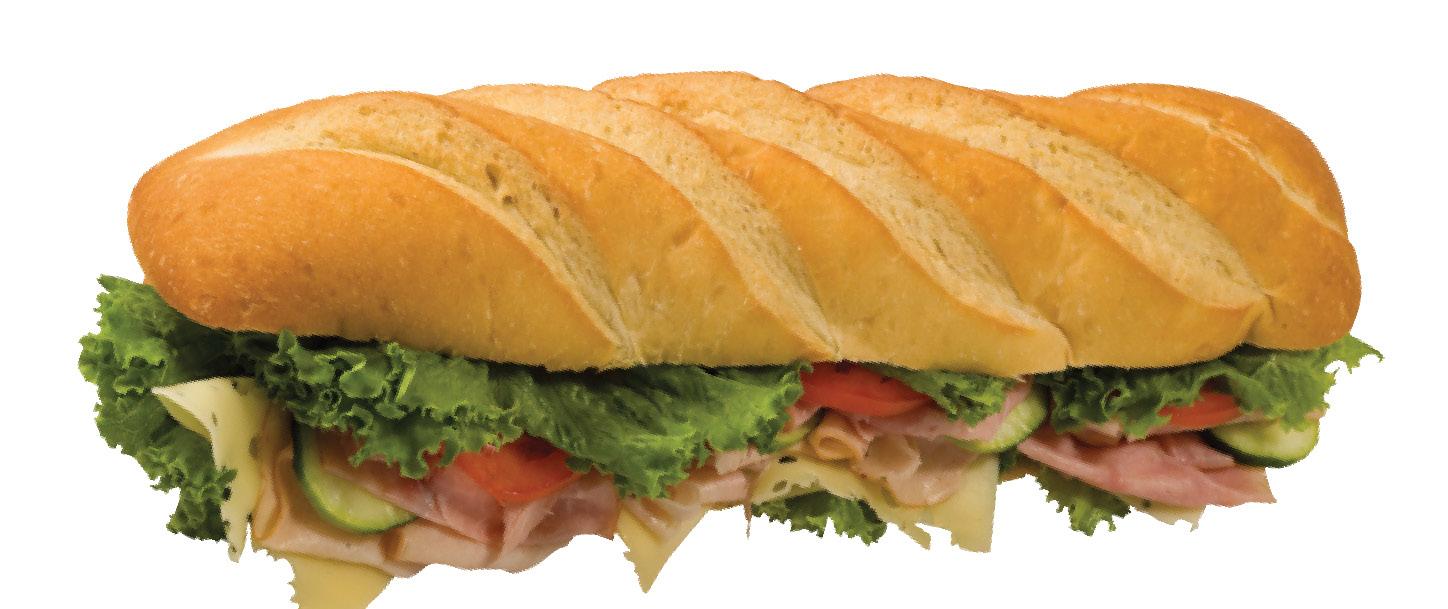

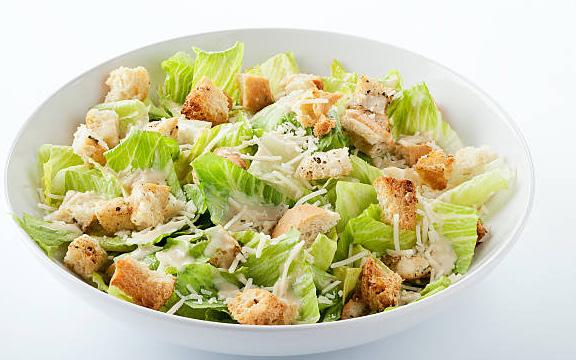


Expand your burger skills this barbecue season
Hamburgers are a staple of backyard barbecues. When summer arrives, few foods embody the laid back vibe of the season better than grilled hamburgers. There’s nothing wrong with a traditional approach to hamburgers, but going the extra mile and augmenting the flavor with some special ingredients can make these beloved summertime staples even more popular. If that’s your goal, then consider this recipe for “Hamburgers with Stilton Cheese, Caramelized Shallots and Mushrooms,” courtesy of Lines+Angles.
Hamburgers with Stilton Cheese, Caramelized Shallots and Mushrooms
Makes 4 servings
For caramelized shallots:
2 tablespoons butter
2 tablespoons olive oil
11⁄2 lbs. fresh shallots, peeled and sliced Salt, to taste
1 tablespoon sugar
For mushrooms:
2 tablespoons butter
1 tablespoon olive oil
1⁄2 tablespoon balsamic vinegar
1 clove of garlic, minced
8 ounces fresh mushrooms, sliced
For hamburgers:
11⁄2 lbs. ground sirloin, chuck or round
Coarse salt, to taste
Freshly ground black pepper, to taste
4 slices Stilton cheese
4 hamburger rolls or sandwich rolls
1 tablespoon melted butter
Lettuce leaves
For caramelized shallots:
1. Melt butter with olive oil in a thick-bottomed pan until the oil is shimmering. Add the sliced shallots and stir to coat. Cook, stirring on occasion, for 7 to 10 minutes. Do not let the shallots burn or dry out. Sprinkle the salt and sugar over the shallots.
2. Cook for about 30 minutes, stirring frequently. If shallots seem to be drying out, add a little water or oil to the pan. Shallots should be brown but not burned. Continue to cook and stir; scrape up all the browned bits stuck to the bottom of the pan, until the shallots are a deep, rich, browned color.
For mushrooms:
Melt butter with oil in a large skillet over medium heat. Stir in balsamic vinegar, garlic and mushrooms. Saute for 20 minutes, or until tender.
For hamburgers:
1. Moisten your clean hands with cold water and divide the ground beef in 4 equal portions. Form into a flattened ball. Season with salt and pepper.
2. Refrigerate until ready to cook.
3. Prepare the grill and preheat to high. Brush the grill grate with oil.
4. Place the prepared burgers on the hot grill grate. Grill


for 5 to 7 minutes per side for medium, or until an instant read thermometer inserted through the side of the burger into the center reaches 160 F.
5. Brush the rolls with melted butter and toast them on the grill for about 45 seconds. Assemble the burgers, with lettuce leaves, Stilton cheese, caramelized shallots, and mushrooms. Serve.

Tuesday - Saturday 11am - 9pm
Closed Sundays & Mondays








Adjusting diet is a necessity for someone with food allergies, intolerances or a condition like irritable bowel syndrome. Although an individual may understand the need to avoid certain foods, it can be difficult to pass up on foods when so many people around you are enjoying them, especially when they are tasty desserts.
Fortunately for lemon bar lovers, this recipe for “Lemon Bars” from “The Complete IBS Diet Plan” (Rockridge Press) by Amanda Foote, RD, offers a sweet and sour offering with delicious shortbread crust that should not cause any digestive distress for IBS sufferers.
recipe on page 17






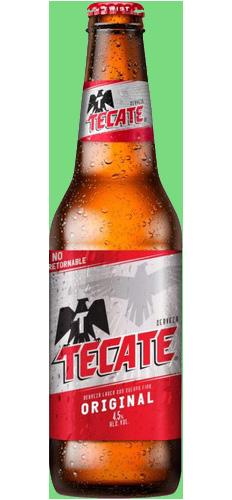



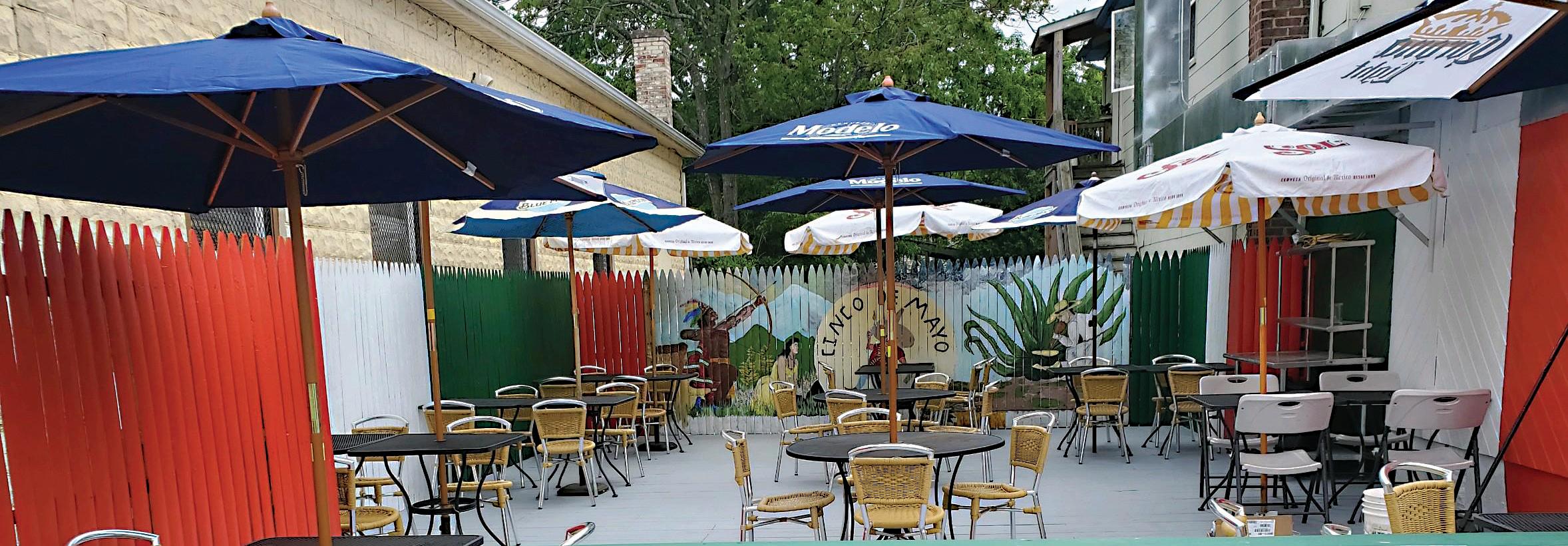



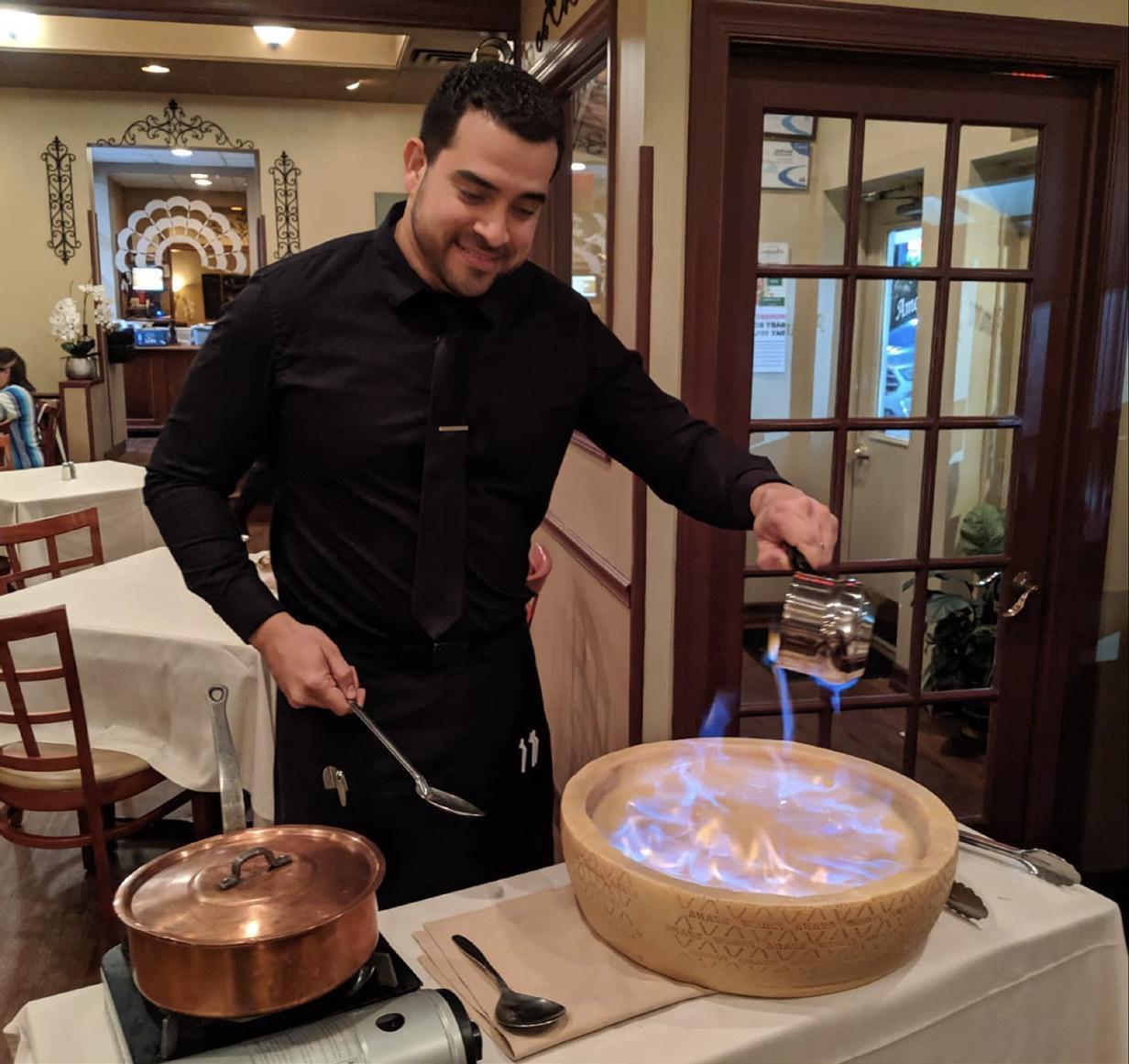





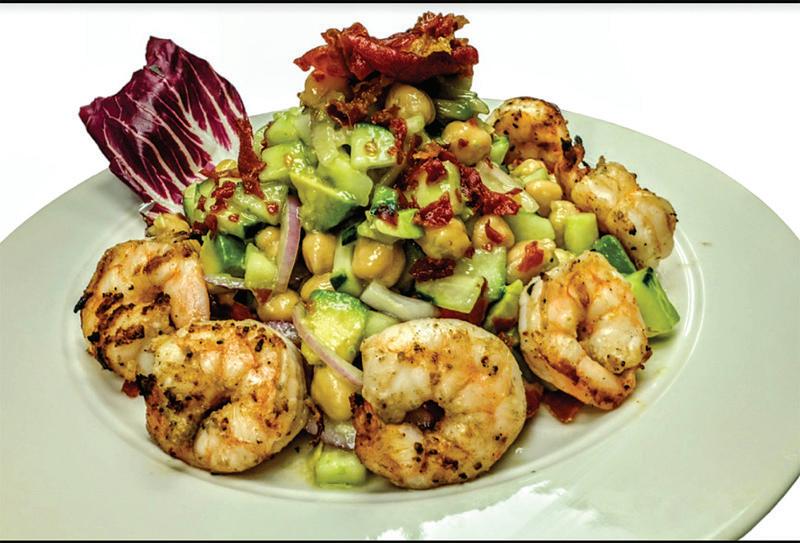






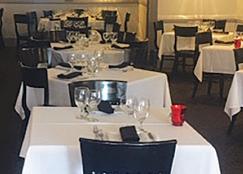
Lemon Bars
Makes 12 bars
For the crust
1⁄2 cup (1 stick) very cold unsalted butter, cut into pieces, plus more for greasing the pan
13⁄4 cups gluten-free all-purpose flour
2⁄3 cup powdered sugar
1⁄4 cup cornstarch
1⁄2 teaspoon sea salt
4 tablespoons very cold coconut oil, cut into pieces
For the filling
4 large eggs
11⁄4 cups sugar
3 tablespoons gluten-free all-purpose flour
Grated zest of 2 lemons
2⁄3 cup freshly squeezed lemon juice
1⁄3 cup unsweetened plain rice milk
Pinch sea salt
To make the crust:
1. Preheat the oven to 350 F. Grease a 9-by-13-inch baking dish with butter.
2. In a blender, combine the flour, powdered sugar, cornstarch, and salt and pulse 10 times in 1-second bursts.
3. Add the butter and coconut oil. Pulse 4 to 5 times more, in 1-second bursts, until the mixture resembles sand.

4. Transfer the mixture to the prepared pan and press the crust into the bottom and slightly up on the sides.
5. Bake for 15 to 20 minutes until just brown.
To make the filling:
6. While the crust bakes, in a medium bowl, whisk together the eggs, sugar, and flour. Stir in the lemon zest, lemon juice, rice milk, and salt. Pour the mixture into the warm crust.
7. Bake for about 20 minutes until the filling is set.
8. Cool on a wire rack for 30 minutes. Refrigerate before cutting into bars and serving.


Experience Italy's rich flavors and homestyle traditions. Our seasonally inspired menu features everything from fresh artichoke salads to cozy pumpkin delights and zesty zucchini creations, complemented by heartwarming homemade desserts like creamy cheesecake and fluffy ricotta cake.
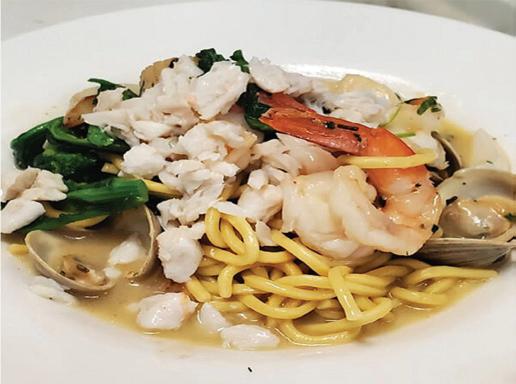
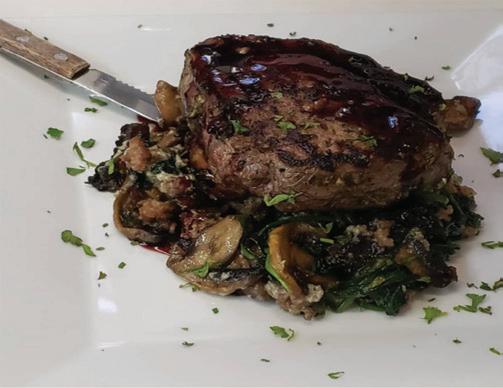


12PM – 9:30PM




NSigns it might be time for a room addition project
o one enjoys being in cramped quarters. Whether a person battles a legitimate case of claustrophobia when confined in tight spaces or simply prefers a place to stretch out, there’s no denying the appeal of a little extra room. That’s particularly so at home, where cramped spaces can make it hard to unwind.
When homeowners feel their walls are closing in on them, many choose to build space via a room addition. Room addition projects are extensive and expensive undertakings, with the home renovation experts at Angi estimating the average add-on costs $48,000. But Angi estimates such projects can cost as much as $72,600, or even more depending on the size of the space and the features chosen.
The financial commitment when adding a room is significant, but homeowners and residents also will need to prepare for a potentially lengthy disruption to their daily routines. Various online resources, including Angi, suggest room addition projects typically take around three to four months. With so much at stake, homeowners who think they might benefit from a room addition can look for various signs to help them determine if such a project is right for them.
• Increasingly cluttered spaces: Cramped quarters without much space for people are perhaps the most notable sign that residents can benefit from some additional space in a home. Cluttered spaces suggest homeowners may have run out of room for their stuff, and a custom addition can provide that extra room while contributing to a more calming ambiance in common spaces that may no longer be overwhelmed by papers, toys and other items that can quickly take over a home that lacks space.
• Lifestyle hurdles: Millions of homeowners like to entertain friends and family, and that’s more manageable for some than it is for others. If interior or exterior spaces do not accommodate hosting, a room addition that expands an existing kitchen or living
KOVACH ROOFING







room might be the ideal renovation project.
• Functionally challenged: A home that no longer has enough space to meet your needs is another sign a room addition might be in order. This very issue emerged for millions of professionals during the COVID-19 pandemic and has remained a challenge ever since. Indeed, an increase in days spent working remotely has left many homeowners grateful to work from home but desirous of a designated remote work space. A room addition to accommodate a home office can be just what remote workers need to restore fully functional status to their homes.
• Cost: While the sticker price of a home addition may (or may not) raise an eyebrow, the project is almost certain to prove more cost-effective than moving. According to data from the U.S. Census Bureau and the U.S. Department of Housing and Urban Development, the average sale price of a home in the United States reached $503,800 in January 2025. While that marked a roughly $16,000 decrease from a year earlier, it’s still a high figure that many homeowners aren’t willing to pay. A cost comparison detailing the price to move versus the price to build an addition may indicate that the latter option is a homeowner’s best bet.
A room addition could be the perfect renovation project for homeowners who need more space but still prefer to stay put.














NJ Gov. Candidate Jack Ciattarelli meets with Jewish community leaders, discusses education, security & rising antisemitism
In his first sit-down with Jewish community leaders since winning the Republican gubernatorial primary, Jack Ciat-
tarelli visited the Rabbinical College of America’s Morristown campus on Friday, July 11, engaging in a 90-minute discussion with Chabad rabbis representing communities from across New Jersey about pressing issues facing the state’s Jewish communities.
The visit brought together Chabad rabbis from the movement’s 72 centers statewide, representing the largest Jewish organizational footprint in New Jersey. The discussion focused on education policy, security concerns, and the rising tide of antisemitism affecting Jewish communities throughout the Garden State.
“This visit displays true concern for the needs of New Jersey’s large Jewish community,” said Rabbi Mendy Herson, Dean of the Rabbinical College of America and Director of Chabad of New Jersey, who hosted the discussion alongside Senator Anthony Bucco and philanthropist Amir Hadar.
During the visit, Ciattarelli also addressed 288 fourteenyear-old students from countries including Brazil, Chile, Dominican Republic, and Russia, who are participating in the institution’s Yeshiva Summer Program (YSP). The international students are in Morristown as part of their transition from eighth grade into the yeshiva high school system.
Rabbi Herson introduced Ciattarelli to the students, emphasizing the importance of civic engagement and quoting the Mishnah’s teaching to “pray for the welfare of government,” a principle central to Jewish civic participation.
“I have deep ties in the Jewish community and serious concerns about the issues facing the community,” Ciattarelli told the gathering. “I chose to make my first visit with the Jewish community here at Chabad because of their extensive footprint across New Jersey – they’re in every corner of our state, serving Jews from all walks of life.” He also announced his upcoming trip to Israel.
The visit included participation from prominent Chabad leaders including Rabbi Eli Kornfeld (Chabad of Hunterdon County), Rabbi Avi Richler (Chabad Liaison of Political Affairs), and rabbis from communities spanning the entire state. Ciattarelli has maintained decades-long relationships with several of these leaders, particularly Rabbis Kornfeld and Richler.
Senator Anthony Bucco, whose family has enjoyed warm relations with the Rabbinical College of America spanning two generations, posted after the visit: “Always enjoy visiting my friends at the Rabbinical College of America.”
The Chabad movement, known for its philosophy of reaching Jews of all levels of observance with love and acceptance, operates 72 centers across New Jersey staffed by 92 rabbinical couples, representing the state’s most extensive Jewish communal infrastructure.
While the Rabbinical College of America welcomes visits and discussions with all candidates and does not endorse candidates for office, the timing of this visit – as Ciattarelli’s first major Jewish community engagement following his primary victory – signals the importance of Jewish voters in
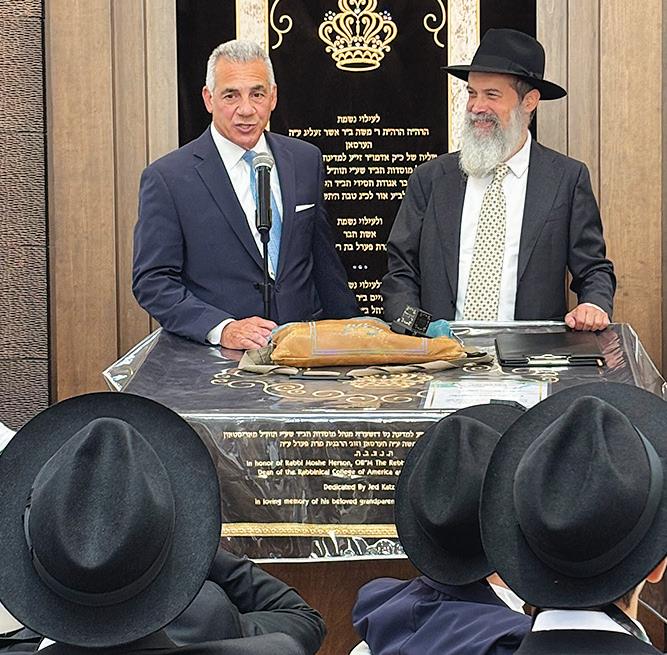
the upcoming gubernatorial race.
The college noted that while Democratic candidate Mikie Sherrill has not yet reached out for a similar meeting, they remain open to hosting discussions with all gubernatorial candidates.

Gubernatorial candidate Jack Ciattarelli meets with Chabad rabbis in roundtable discussion Rabbi Herson points out campus security features to Jack Ciattarelli during campus tour Ciattarelli greets young student during visit to Yeshiva Summer Program
Be It Ever So True: Kindness Is More Precious Than Gold

By Richard Mabey Jr.
Igrew up in the small town of Lincoln Park, New Jersey. I was raised in the very home that my great grandfather, William Mabey Jr., built in 1890. My paternal grandparents, Watson and Bertha Mabey, lived with my mom, dad, sister and I. There were certain values that were prevalent in small town life, growing up in the 1950’s. Now at 71, I am not so sure they are out of style, nor not in alignment with our modern world.
Having been fairly recently diagnosed with the very serious heart disease of Hypertrophic Cardiomyopathy, I do my utmost best to keep my thoughts positive and filled with loving energy. The other day, I reflected upon a simple act of kindness that my dear Grandpa Mabey practiced with great regularity. In the backyard of the old Mabey Homestead, there once stood six grand and glorious apple trees. I remember, in the summer months, Grandpa and I would pick up all the apples that graced the green grass. We would put them in old pails and buckets, then walk to the forest path at the end of Mabey Lane. Grandpa and I would walk the forest path together, carrying our pails of fallen apples. Every so often, Grandpa and I would stop along the wooded trail and I would follow Grandpa’s lead. We would spill out a few apples from one of our pails and then move on.
We would walk the forest trail for a short while, then stop again and spill out some apples along the edge of the path. There was a reason why Grandpa taught me to spill apples along the wooded trail that led to the towpath of the old Morris Canal. I remember it all so well, like it was yesterday. Grandpa would say to me, with wisdom filling his voice, “Richie Jim we’re leaving dessert for the deer of the forest.”
Grandpa’s face would light up as he smiled his crooked grin. Grandpa truly loved the wild creatures of the forest. Now, over 60 years later, I reflect upon dear old Grandpa’s kindness and it brings warmth and joy to my heart. Kindness is so ever incredibly precious. Truly, kind acts are more precious than gold.
Richard Mabey Jr. is a freelance writer. He has recently had two books published. He currently hosts a YouTube Channel entitled, “Richard Mabey Presents.” Richard may be contacted at richardmabeyjr@gmail.com.


According to the National Aeronautics and Space Administration (NASA), the shifting climate across the planet is impacting extreme weather throughout the globe. NASA notes that heat waves affecting the land and the sea, severe floods, droughts lasting years in some cases, extreme wildfires, and hurricane-related flooding are becoming more frequent and intense due to climate change. Warming air and ocean temperatures resulting from the increased burning of fossil fuels is affecting the water cycle, shifting weather patterns and melting land ice, all of which is making extreme weather even more severe. And NASA warns that severity only figures to increase even further as the planet continues to warm, meaning the storms of today, already devastating to the communities they affect, figure to be even more so as air and ocean temperatures continue to rise.
Dear old Grandpa Mabey, standing at the end of Mabey Lane. Please note Grandpa’s garage in the right hand side of the picture. To the best of my knowledge, Grandpa’s garage is still standing.
New Jersey Tea Party
By Henry M. Holden
It was a time when American colonist began to feel crushed with heavy and illegal taxes. Imposed by England. They felt that the heavy tax imposed on tea was illegal without physical representation in Parlement. It was unfortunate that the colonists, under the rule of Great Britain, had no means of voicing their grievances and there were 12 other colonies (States) that felt the same way.
The business of forcing tea on the American colonies had become a very serious matter. Tea was a major trading commodity, and the warehouses in London stored approximately 17 million pounds of tea. If there should be no sale to any of the American markets the outcome would be catastrophic for England.
In the pre-revolutionary war days liberty was a much wanted and needed commodity for the future United States of America. The colonist of New Jersey showed a strong desire for independence. Many were hopeful that the spirit that welcomed Philadelphia would also welcome the spirit in the hopeful and thriving inhabitants in Cumberland County.
Founded in 1675 by John Fenwick, Cumberland County, New Jersey, is older than Philadelphia, which was not founded until 1682. The hands of time had not touched Greenwich. It is much the same today as it was three hundred years ago, except the British flag is no longer flying; instead it is the stars and stripes of 50 United States of America, that are no longer Colonies.
Boston Tea Party, (December 16, 1773), was an event in which 342 cases of tea belonging to the British East India Company were thrown from ships into Boston Harbor by American patriots disguised as Mohawk Indians. The Americans were protesting both a tax on tea (taxation without representation) and the monopoly of the East India Company. The events of that day would later spark a copycat action.
Tea from England was sent to the ports of Boston, New York, Philadelphia and Charleston; and what tea was used in New Jersey came from those places after the consignees had paid the tax.
The passage of the Tea Act (1773) by the British Parliament gave the East India Com-

pany exclusive rights to transport tea to the colonies and empowered it to undercut all its competitors. The leaders of the major cities in the colonies cancelled their orders in protest, but the governor of the Massachusetts Bay Colony allowed tea to arrive in Boston.
In the early winter of 1774, the quiet residents along the banks of the creek were startled by the appearance of a British brig, (a sailing ship with two masts), called the “Greyhound,” by its captain. It avoided sailing to Philadelphia and sailed about four miles up the Cohansey Creek. The brig stopped at the village of Greenwich, which was its first
SUMMER SAVINGS




22
landing laden with a cargo of tea sent out by the East India Tea Company. The little town of Greenwich, about forty miles from Philadelphia was the principal settlement of Cumberland County in 1774.
Meanwhile, the captain of the “Greyhound” vessel carrying tea realized that his vessel would be seized by the British and he would have to pay a heavy tax on the tea. So, he diverted course from Philadelphia and headed up the Cohansey Creek, a navigable body of water running through Cumberland County and emptying into Delaware Bay.
On the evening of, December 22, 1774, a company of about forty young Whigs, (taking a page from the Boston Tea Party a year earlier) disguised as Indians, entered the cellar, of Dan Bowen’s house. Having found an English sympathizer, a Tory, as they were called, Daniel Bowen, allowed the Greyhound’s crew secretly stored the cargo of tea in the cellar of his home.
They took possession of the entire cargo of tea, transferred the tea cases from the cellar into an adjoining field, and piling them together, burned them in one general conflagration.
The Tea company was undoubtedly under the impression that the conservative feelings and principles of the people of New Jersey would induce them to submit quietly to a new tax. The result showed that the temper of the people was little understood by the East India Tea Company.
However, this unusual procedure was noted by the citizens who immediately appointed a temporary committee of five to look after the matter until a county committee might be appointed.
A general committee of thirty-five was later appointed, with representatives from Greenwich, Deerfield, Jericho, Shiloh, Bridgeton, Fairfield and perhaps other places.
News of the Boston Tea Party had reached Greenwich, and the defiant example was regarded by many of the local settlers as worthy of their own contempt for the British. Fate now presented them with a ready-made opportunity to duplicate the act.
On the evening of, December 22, 1774, a company of about forty young Whigs, disguised as Mohawk Indians, entered the cellar of Bowen’s house. They took possession




of the cargo and moved the tea chests from the cellar into an adjoining field, and piled them and together, burned them in one general conflagration.
Thus, the patriots of Cumberland County living in Greenwich expressed their discontent by reacting to oppressive governmental measures. They had clearly taken a stand for independence and democracy.
Later, several participants in the Tea Party were brought up on charges by the representatives of the Crown. A call to every adult person for funds to help those under charges resulted in raising thousands for legal fees. However, there was never a trial because the issue was moot. The shooting war with the British had already begun.
Today, Greenwich has been granted the distinction of being one of the five tea-party towns in America, the others being Charleston, Annapolis, Princeton, and Boston. In 1908 a monument was erected to remember the original old marketplace on Ye Greate Street where the burning of a cargo of British tea first took place, on December 22, 1773.




The Legend of Tempe Wick
By Henry M. Holden
There are so many curious and unexpected things that occur during a war that greatly affect the people who live in the war zone. One event suddenly involved a young woman born in 1758 -(1822). Tempe (Probably short for Temperance) was born in Mendham on October 30, the youngest of five children in the Wick Family.
Her father, Henry, had inherited a farm from his father John and her four older brothers and sisters were born there. In 1746, her father and Nathan Cooper jointly purchased 1,000 acres of good land, bordering the Passaic River. Nathan gave his share of the land to her father two years later. By that time, the family had moved to Jockey Hollow, just outside of Morristown, where the father purchased more land, expanding the property to 1,400 acres. He built a new, large home on the farm a few years later.
Their property was one of the largest farms in Morristown. It had 1,000 acres of good timber, primarily oak and walnut. The orchards contained several hundred apple trees. Tempe said they made good, hard cider from this crop. They also had acreage under cultivation where they planted barley, oats and flax. Her four siblings moved out of the home before the War of Independence began.
Tempe Wick was the owner of a fine horse. Tempe and the horse had an unwritten agreement of respect for one another. and one of the legends of America’s War for Independence.
The legend is one woven from equal measures of courage and ingenuity, a young woman alone and on the edge of a brutal winter, facing uncertainty with little more than her wits.
On December 21, 1780, Henry Wick died, leaving Tempe alone to care for her sick mother Mary, and her mentally ill brother. When her mother’s condition worsened, Tempe saddled her horse and rode for the home of Doctor William Leddell, who lived a few miles away. The doctor was not in, so Tempe left a message at the Leddell residence and headed home.
The Revolutionary War threw a dark shadow over the countryside, and rumors hung to the cold air like icicles on tree branches. In the muted quiet following her father’s death, the Wick homestead, in Jockey Hollow, became a fragile unbreakable dwelling and Tempe
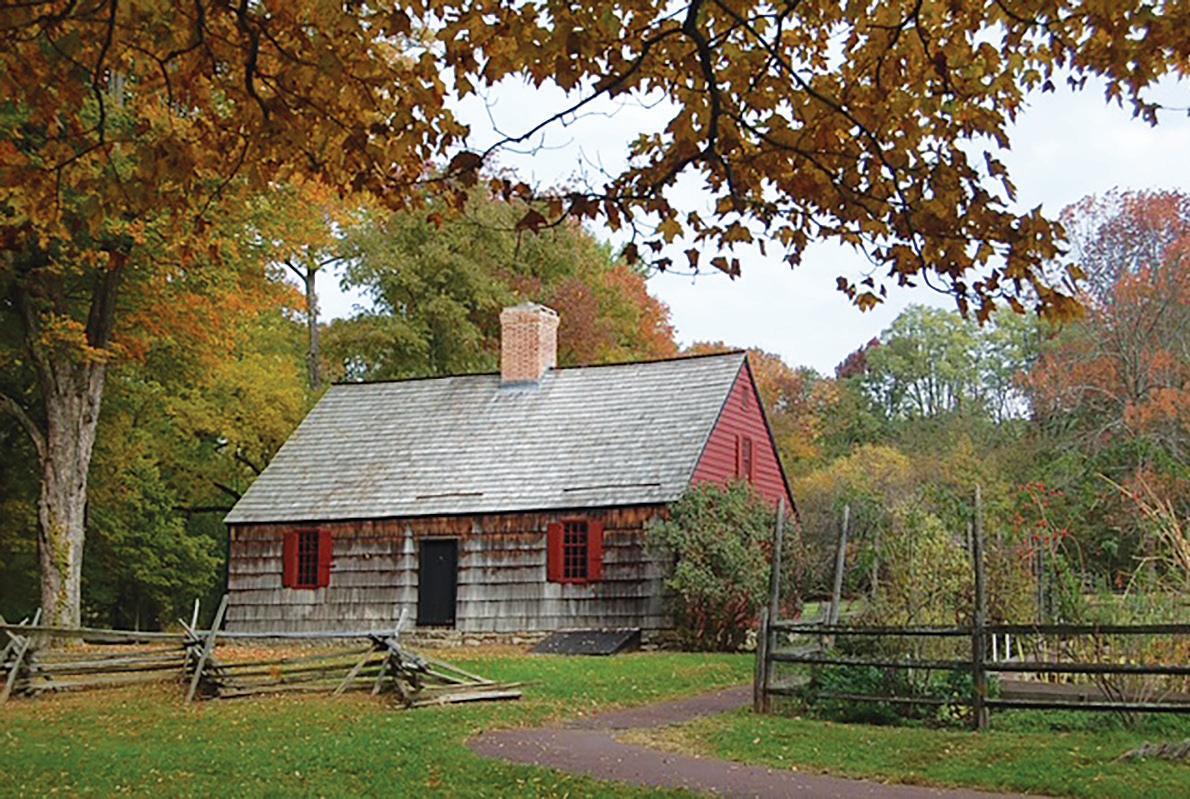
charged with care for her ailing mother and anxious brother.
But the region bristled with restless soldiers and whispers of mutiny. As Tempe was riding home from her visit to the doctor’s office, she was confronted by three mutineers from the Continental Army, demanding her horse.
Tempe’s prized mare became a target, coveted by weary men grown desperate. The threat was as real as the icy wind that whipped through the trees. Tempe understood that swift decisions might mean the difference between safety and loss, or life and death.
One of the mutineers grabbed the bridle of her horse, demanding that she give them cont. on page 26



Main Street
Antique Center












her mount. Tempe agreed, but when the soldier released the bridle to help her down from the saddle, she whipped her horse and raced away for home. She arrived safely, but she feared the mutineers would follow her home and take the horse by force. Running away from them was not the answer and would only postpone the trouble for a short while. So, she knew she needed a different strategy. It would make no sense to ride past her house and ride on. She had no place to go. All the soldiers had to do was wait at her farm and for her to return.
Tempe road swiftly toward her home. Her thoughts were galloping as fast as her horse could run. As she was closing the distance to her home she reached a conclusion 0n what to do.
She did not ride toward the barn but dashed through the gateway of the large yard and swiftly dismounted. She turned toward the road, but the men were not in sight. She knew they would eventually show up since they were without horses and would eventually find the Wick house, and Tempe, if she did nothing.
What she had decided to do was something which people never did, but it was the only thing she could think of, and she was a girl whose actions were as quick as her ideas were original. Without stopping for an instant, she took her horse to the back door and led him confidently into the house.
According to one version of the story, Tempe sprang from her horse and led the horse into the house via the back door and hid it in a guest bedroom. She closed the shutter over the window and put a feather bed under it to muffle the sound of its hooves. She and her horse were now in total darkness. But none of the descriptions addressed the animal’s toilet needs.
In another version of the story, Tempe hid her horse in the kitchen. Claims are frequently made that a faint imprint of a horse’s shoe can be seen on the kitchen’s floor.
The soldiers arrived at her house soon after and searched the barn out buildings and woods around the house but they left empty-handed.
After the army passed Tempe’s home, she guided the horse out of the guest room and walked him back to his stall in the barn. The room in which the horse had spent so many quiet days (three weeks by some estimates} became guest quarters again.
Remembering My Days As Quartermaster
By Richard Mabey Jr.
In February of 1967, I was 13 years old and in the eighth grade at dear old Chapel Hill School. It was at that time that a most wonderful and honorable title was bestowed upon me by the Troop Committee of Boy Scout Troop 170. That honor was becoming a Warrant Officer, in the role of Troop Quartermaster. A job that I took very serious.
The role of the Troop Quartermaster was multifaceted. As Quartermaster, I was in charge of keeping an inventory of all of the troop’s tents, cooking gear and equipment. It was my job to be the leader for tent repair Saturdays that we used to have twice a year in the backyard at the old Mabey Homestead. And, it was my job to make sure that all of the tent poles were in working condition. And, that every tent had enough tent stakes in each tent’s little stake pouch.
But the truth of the matter is, that at the time, I wasn’t completely happy to be the Troop Quartermaster. Deep inside my heart, I really wanted to be the Senior Patrol Leader. That was the seemingly glorious position.
It was the Senior Patrol Leader who got to run each scout meeting. It was the Senior Patrol Leader who would lead Troop 170 in the big annual Lincoln Park Memorial Day Parade. And, it was the Senior Patrol Leader who would represent the troop at the Saturday evening Commissioner’s Round Table Meeting at both the big District Spring Camporee and the Fall Camporee.
I didn’t realize it at the time, but God had put me in the right position to be the Troop Quartermaster. I learned all so much, in my two years serving as Quartermaster. I kept detailed inventory records of the troop equipment. I led the scouts in the Saturday tent repair days. I kept our troop closet, at Thorpe Hall at Saint Andrew’s Episcopal Church, in immaculate condition. I learned to be very organized and to present equipment status reports at some of the Troop Committee Meetings. Being the Troop Quartermaster was not the most grand and glorious position, but it was the very place where God planned me to be, to grow and learn, to become a good leader.






Oakland Boro $324,700 LAKEFRONT















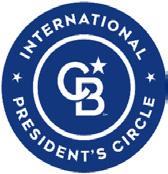



Remembering... cont. from page 26
In September of 1969, as I began my junior year at Boonton High School, I became Boy Scout Troop 170’s newest Senior Patrol Leader. I soon learned it wasn’t all glory, but rather a lot of hard work. Leadership is not easy. I can honestly say that I did a fairly good job in my role as Senior Patrol Leader. But paramount to it all, I would have never really been ready for the job of being the Senior Patrol Leader, if I had not grown and learned all so very much that I did in my role as Troop Quartermaster for two years.
Sometimes, God puts us in a position that doesn’t quite match where we want to be at the time. We dream of greater heights. But God, in His infinite wis -

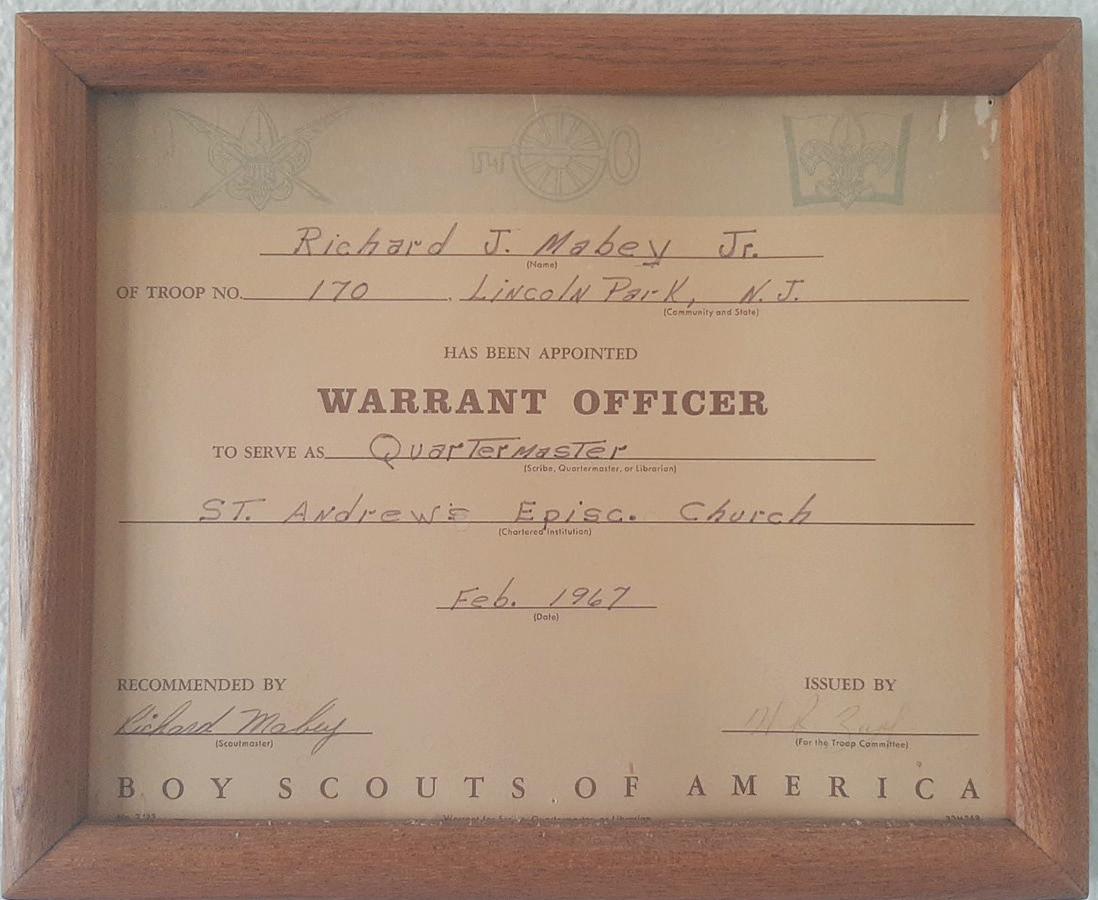
A photo of the actual Warrant Officer Award presented to me by Troop 170’s Committee, back in February of 1967.
dom, knows the best place for us to be, in order to learn and grow to prepare for the next higher step in life.
Richard Mabey Jr. is a freelance writer. He has recently had two books published. He currently hosts a
YouTube Channel entitled, “Richard Mabey Presents.” Richard may be contacted at richardmabeyjr@gmail. com.






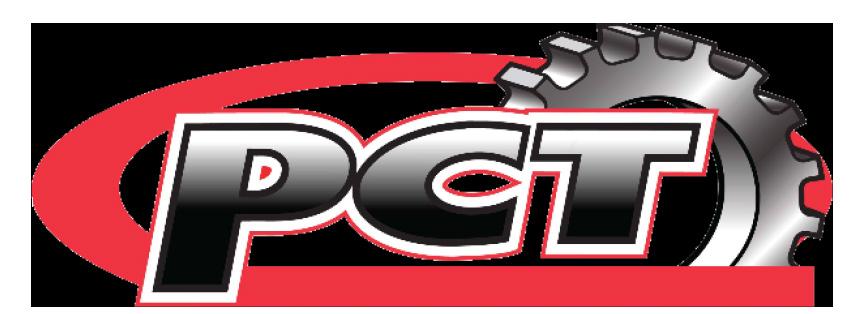





Local REALTOR® Named “Pequannock Township American Legion Citizen of the Year” for 2025
Colleen A. McMahon, a lifelong resident of Pequannock Township, has been bestowed the honor of being named the Pequannock American Legion 2025 Citizen of the Year for her tireless volunteerism and efforts to keep residents of the community connected and informed. On behalf of the Township of Pequannock (Morris County), Township Mayor and Council, and American Legion John H. Lookhoff Post 242 and Pequannock Memorial Post 450, this yearly award is presented to recognize individuals who have made significant contributions to the community.
Jim Van Dyke, Commander of American Legion Post 242, remarked that “Colleen was an easy choice” when it came to the committee’s selection of this year’s honoree. Her organization and leadership in bringing the creation of the Pequannock Township High School Alumni Veterans Wall to fruition, as well as her regular contributions to meaningful local charitable events such as Grains of Hope, Empty Bowls, Pequannock Relay for Life, and more, are just a few of the qualifications that led the committee to honor Colleen this year. Additionally, she has participated with CENTURY 21® Crest Real Estate’s team for over 20 years in the placement of American flags throughout the township for Memorial Day, and she administers the Pequannock Township, New Jersey Facebook Group that keeps residents informed of all things happening around town. She is an active member of the Chamber of Commerce and is currently working on beautification projects within the township.


Colleen is a full time REALTOR® professional with CENTURY 21® Crest Real Estate for over 30 years, having won numerous CENTURY 21® and New Jersey Realtors® Circle of Excellence Sales Awards throughout her career. She and her husband Jerry have raised three children in town, and are also grandparents to three granddaughters. Colleen is well known for helping out in any situation and is always quick to dive in and lend a hand in any crisis or to anyone in need. It is through this willingness to give freely in service to the community that Colleen was the natural choice for 2025 Citizen of the Year.


I Remember Dad: A Most Endearing Gift
By Richard Mabey Jr.
In September of 1969, I turned 16 and began my junior year at Boonton High School. It was late September that a most traumatic event came to my life. I got a “D” on a chemistry quiz. It was the first “D” I had ever received in my life. I was deeply hurt and thought that my unbroken yield of continuing to make the Honor Roll, had come to a grinding halt.
That very night, I confessed to my father about getting a grade of “D” on my first chemistry quiz. I was very embarrassed and felt ashamed. To my surprise, my father was not upset at all. The main thing that he told me was that I needed to study my chemistry, even more. It was just that simple.
The weekend that followed, Dad and I took a ride to a little bookstore in Wayne. Dad bought me a booklet titled, “The How and Why of Chemistry.” This booklet presented the subject of chemistry in a much more understandable style than my textbook did. I read this book, from cover to cover, that weekend.
When we got home from the bookstore, that Saturday morning, Dad and I sat down at the dining room table of the old Mabey Homestead. Dad worked on scouting paperwork, which was part of his volunteer job of serving as Scoutmaster of Boy Scout Troop 170. I remember that Dad and I spent that entire Saturday afternoon and evening sitting at the dining room table.
Dad did not know much about chemistry. But he knew that if I was going to get a good grade on my next chemistry quiz, I needed to study more than I had been studying. So, after church that following Sunday, once again, Dad and I began sharing the dining room table.
I remember that Mr. Toomey, my chemistry teacher, gave us another chemistry quiz that following week. To my amaze-

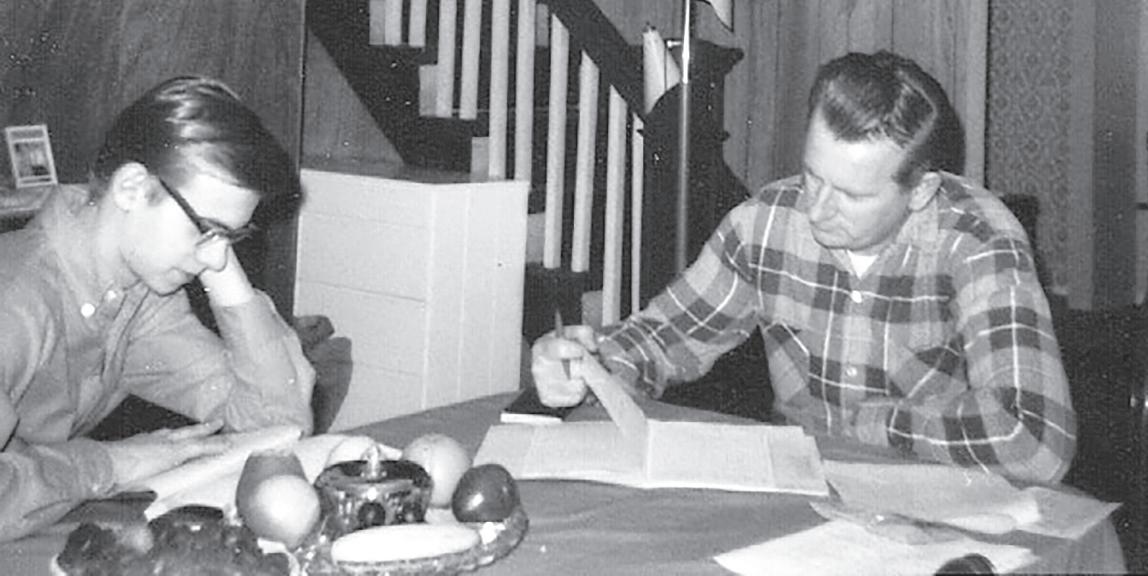
ment, I got a “B” on that quiz.
I owe the sun and the moon and the stars to my father. He believed in me, more than I believed in myself. He would never let me give up. He would never allow me accept defeat. My father had a rare blend of being both caring and stern with me.
Now at 71, nearly 20 years have passed since my beloved father went Home to be with the Lord. I still miss him very much. A day hasn’t gone by that I haven’t thought about him. My father built a foundation in my heart and soul, that was filled with inner strength and determination. He taught me to never give up, to never ever give up.
If you’re a parent, the most wonderful gift that you can give to your child, is to teach him or her to believe in themself, to never give up, to never surrender when things get tough. For truly, love is the most powerful force in the uni
verse.
Richard Mabey Jr. is a freelance writer. He has recently had two books published. He currently hosts a YouTube





-
Channel entitled, “Richard Mabey Presents.” Richard may be contacted at richardmabeyjr@gmail.com.
From the Autumn of 1969, Dad and I studying at the dining room table of the old Mabey Homestead.
A photo of a copy of the actual “The How and Why of Chemistry” book that Dad bought for me back in 1969.
5 Steps Students Can Take Toward Entrepreneurial Careers
Entrepreneurship is a career goal for many working adults. Autonomy and personal satisfaction are just a couple of the benefits of running your own business. It's a professional path about 3 in 5 teens would prefer over a traditional job, according to a survey by Junior Achievement (JA). Running a successful company depends on multiple factors, including a solid business plan, adequate startup resources and a receptive market, as well as a strong sense of responsibility, work ethic and ability to persevere under pressure.
Beginning to shape the skills and mindset necessary to flourish as an entrepreneur can begin well before entering the workforce. In fact, even students in junior high and high school can begin working toward entrepreneurial goals with these tips from JA, a nonprofit that inspires and prepares young people by delivering lessons in financial literacy, work and career readiness.
1. Select Electives Wisely
Students don't have to wait until they're in college to begin developing business skills and knowledge. If they have the ambition and drive to become an entrepreneur, they may find it beneficial to complement the classes needed for graduation requirements with electives that allow them to explore their interest in the business world. Some examples include accounting, marketing, finance, economics, psychology and computer science.
2. Make Part-Time Work Meaningful
Many students enter the workforce in high school to start practicing money management and contribute to expenses like gas and car insurance. While most jobs available to students are service oriented and fall outside the

business world, it doesn't hurt to explore options that put students closer to their entrepreneurial ambitions. For example, local small businesses may be willing to hire someone eager to learn.
3. Take Part in Programs
Kids can challenge themselves by putting their knowledge into practice as real-world entrepreneurs. For example, JA's Company Program is an immersive program that fosters creativity, critical thinking and business acumen, offering students unique opportunities to explore the world of business and economics by creating real companies. Participants learn to present their business plans and results during competitions that offer learning opportunities. Additionally, at the Future Bound competition (made


possible through the support of businesses including Chickfil-A, Delta Air Lines, Pacific Life Foundation and Staples), participants took part in seminars and mentorship. The event featured four programs that empower students with entrepreneurship and financial literacy skills - the Company of the Year National Competition, the Social Innovation Challenge, the Titan National Competition and the National Stock Market Challenge.
4. Seek a Strong Mentor
Some of the best learning comes from emulating others who are successful in their fields. Meeting regularly with someone who serves as a role model can help students sharpen their vision for the future and learn from the experiences that propelled professionals into their current positions.
5. Define a Future Vision
Creating an inspiration board can help motivated students compile and organize ideas. This board, whether physical or digital, can serve as a source of inspiration and help motivate students to identify and overcome obstacles while working toward bringing their visions for careers as entrepreneurs to life.
Find more ideas to help students gain confidence and skills for future education and careers, and learn more about the competitions, at jausa.ja.org.
Source: Junior Achievement (Family Features)

Photo courtesy of Shutterstock
Planning for a Positive Economic Future
Financial literacy tips for teens

Financial literacy is a critical skill that helps set the foundation for a stable and prosperous future. By understanding the basics of money management, teens can make informed decisions and avoid common financial pitfalls.
According to the annual Teens and Personal Finance survey, a study of teens ages 13-18 conducted by Wakefield Research on behalf of Junior Achievement and MissionSquare Retirement's Foundation, 45% of high schoolers took a personal finance or financial literacy class at school. This is up from 31% in 2024, indicating the nation's youth are interested in building a strong financial foundation. What's more, of the students who took their school's curriculum, 64% found it extremely or very helpful, yet despite this increase, data reveals knowledge gaps remain. In fact, 42% of teens surveyed are terrified they won't have enough money to cover their future needs and goals.
"There is so much for teens to absorb when learning about finances and planning for their future, they often struggle to envision what lies ahead," said Andre Robinson, president and CEO of MissionSquare Retirement. "Offering engaging programs that can boost financial knowledge and decision-making skills can only help to inspire young individuals to build a strong foundation of lifelong financial resilience."
Consider discussing these economic topics with your teen to help make a positive impact on students' financial readiness and get them ready for financial decisions they'll face in adulthood.
Mastering Saving and Budgeting
A good starting point for teens is to create a simple budget that tracks income and expenses. Because only 36% of teens surveyed save a part for their futures when they receive money, this can help them understand where money is going and identify areas they may be able to save for the future. This is particularly important considering 68% of teens agree that saving for retirement is something they can think about later in life.
Understanding Credit
Credit is a powerful tool but can also be a source of financial trouble if not managed properly. It's essential to understand how financial behaviors, like paying bills on time
Home Town Life is 100% mailed to local residents and businesses
We offer local news, informative articles, community happenings and online advertising
No long term commitments, free artwork and personal marketing guidance
Servicing Morris, Passaic, Essex and Warren Counties
Lisa Buniewski Marketing Sales Associate 973-851-2346 cell lisa@mylifepublications.com
Call, email or text Lisa for more information

and keeping credit card balances low, impact their credit scores. A higher FICO score, which 80% of teens surveyed had never heard of or did not fully understand, can lead to better interest rates and more favorable loan terms.
Managing Common Debt Pitfalls
According to the survey, 43% of teens believe an interest rate of 18% on debt is manageable and can be paid off over time. However, it's important to understand the true cost of debt and how interest rates can accumulate over time and lead to significant financial strain. Establishing good debt management habits early, such as avoiding high-interest debt and paying off balances quickly, can lead to a healthier financial future.
Investing and Planning Ahead
According to the survey, teenagers' most appealing investing strategies are savings accounts, side hustles and keeping cash at home, and only 13% invest a portion of their money. Encouraging teens to learn about different types of investments, such as stocks, bonds and mutual funds, can help them make informed decisions and begin to build long-term wealth.
For more information to help teens improve their financial knowledge, visit ja.org.
Source: Junior Achievement (Family Features)

Photo courtesy of Shutterstock
Looking to hit Fairways & Greens? Looking to... Improve Course Management? Improve your
practice!

Former PGA Tour caddy
At Bowling Green Golf Club







Butler Library
Thank you to Girl Scout Troop 98073 for designing book marks for our patrons. Each one is a work of art. They will be at the Circulation Desk and Summer Reading Table for anyone who would like to choose one.
The Butler Library is closed on Saturdays through August 30. Visit the Library Monday through Friday during regular hours.
Mondays – Thursdays 10:00am – 7:50pm Fridays – 10:00am – 4:50pm.
Children’s Friday Morning Free Movie of the Week
Join us every Friday at 11:00am during July and August In the Children’s Room at the Butler Library. No sign-ups required.
Now showing the following movies on our 70" Flat Screen TV:
Friday, August 15, 2025: Paddington 2 (2017) PG 1 hr 43 min
Friday, August 22, 2025: Nanny McPhee (2005) PG 1 hr 37 min
Friday, August 29, 2025: Despicable Me (2010) PG 1 hr 35 min
Adult Library Program - Canvas Painting Class
Wednesday, August 13, 2025 6:00pm-7:30pm
Presented by Melanie Valenti of The Spotted Canvas

This FREE class will be held In-Person at Butler Public Library for 12 participants and paid for by the Butler Public Library. The Spotted Canvas is a place where we make memories that never fade! On Wednesday August 13, 2025, we will be visiting the Butler Public Library to paint a canvas painting with their adult community! Our mission is to create a welcoming and inspiring environment where people of all skill levels can come together to explore their artistic talents. We aim to make the world of art accessible, fun, and enjoyable for everyone!
This program is free of charge. Registration in advance is required by calling the Butler Library at: 973-838-3262, or stop by our Circulation Desk to sign up.
AARP Safe Driving Class
In-Person at Butler Public Library
Wednesday, August 27, 2025 12:00 pm – 6:30 pm
Presented by AARP Volunteers: Ted & Sarita Wilson

Refresh your driving skills with this class. You will learn: Safe driving techniques, proven safety strategies, new traffic laws & rules of the road. Plus, there are no tests to pass. Simply sign up and learn. Upon completion, you could receive a multi-year discount on your car insurance. Cost is $20 for AARP Members, $25 for non-members, on the day of the class, check or cash only. You must bring your Driver’s License and AARP card (latter if a member) with you to class to receive the certificate. This class is open to any driver of any age. A light snack will be provided, feel free to bring what you need. Call: 973-8383262, to sign up for this in-person classroom course. Pre-registration is required. Please NO Walk-Ins Allowed. For more information, please visit: www.aarp.org/drive.
Butler Public Library is located at 1 Ace Road, Butler, NJ 07405, by phone at: 973-8383262 or online at: www.butlerlibrary.org.





VGENERATORS ALLEY

Schedule your appointment today 908-876-4510
marc@valleygenerators.net




SA guide to fall lawn care for cool-season grasses
pring is the season most often associated with lawn care, and for good reason. Grass starts growing in spring, and the season is a great time to fertilize many grasses in the hopes lawns can look their best and endure the hotter, dryer weather of summer.
Spring might mark the time when many homeowners begin tending to their lawns each year, but it’s important to recognize the significance of fall lawn care as well. Grasses vary, and homeowners are urged to identify which type of grass is in their lawn so they can ensure it gets the care it needs before winter’s first frost. Cool-season grasses like perennial ryegrass and Kentucky bluegrass are common in various regions, and the following strategies can help homeowners with these types of grasses tend to their lawns this fall.
• Stick to your recommended fertilization schedule. Homeowners who have been fertilizing since spring are urged to continue doing so in fall at the recommended interval. It’s easy to forget to fertilize in fall thanks to cooler temperatures that don’t call lawn care to mind and busier schedules after school starts again and summer vacation season ends. But many fertilizer manufacturers advise users of their products to fertilize several times over the course of the year, including in fall. Stick to the intervals recommended on the packaging of the fertilizer you’ve been using, making sure not to forget to fertilize this fall.
• Conduct a soil test. A soil test can determine if the soil is lacking any nutritive elements it needs to come back strong in spring. Certain amendments can restore pH balance if necessary and foster stronger growth when lawns come back in spring.
• Aerate, if necessary. Soil can become compacted over time, and that can cause a range of problems for a lawn. Compacted soil can make it harder for water to reach the roots of grass, which weakens grass and makes it more vulnerable to damage during adverse weather events like drought. Compacted soil also makes it harder for nutrients in fertilizer to get into the soil. Aerating is best left to professionals, particularly in larger lawns, as the job can foster strong root development when done properly.
• Remove thatch where it’s excessive. Thin layers of thatch can benefit lawns by delivering nutrients from glass clippings and leaves to a lawn. However, when thatch is excessive, it can block air, water and even fertilizer from reaching the soil. Thatch often can be removed with a rake, but lawns with especially thick layers of thatch may need to be scarified. Homeowners can take a DIY approach to scarifying or hire a landscaping professional to dethatch the lawn and remove the thatch from their properties.
• Continue to water the lawn. A cool-season grass will continue to require water into the fall. Though the lawn won’t need to be watered as frequently in fall as in sum -

mer, various lawn care professionals note cool-season grasses still need roughly an inch of water each week in fall.
• Remove leaves as they fall. Fallen leaves can affect a lawn in much the same way as excessive amounts of thatch, blocking water and nutrients from reaching the soil. So it’s best to remove fallen leaves, especially when they begin to fall in large quantities.
Fall is an opportune time to tend to a lawn to increase the chances grass grows back strong in spring.
Cool-season













